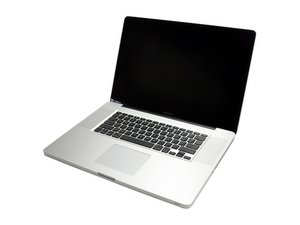The speed of my Disk is about 450 Mb/s read and 150 Mb/s write
I have a question. The speed of my Disk is about 450 Mb/s read and 150 Mb/s write. (maybe because the disk structure of Catalina is with a virtual partition as read only, I do not know)
- Model Name: MacBook Pro 17” Early 2011
- Model Identifier: MacBookPro8,3
- Processor Name: Quad-Core Intel Core i7
- Processor Speed: 2.2 GHz
- Number of Processors: 1
- Total Number of Cores: 4
- L2 Cache (per Core): 256 KB
- L3 Cache: 6 MB
- Hyper-Threading Technology: Enabled
- Memory: 16 GB
- Boot ROM Version: 87.0.0.0.0
- SMC Version (system): 1.70f5
- Sudden Motion Sensor:
- State: Enabled
FYI: I did enable TRIM on the SSD
Is dit een goede vraag?

 1
1 
 329
329  970
970
1 Opmerking
Hello:
Replace the HD for the new SSD. Maybe the problem is the SSD disk. It is a WD green 1Tb
In my test made with BlackMagic give 166 Mb/s - 415 Mb/s
But for the limitations with the read only disk, skip a lot test.
Before include my User from High Sierra, start up only in 20 seconds. Now it's about 45.
Product: 6 Series Chipset
Link Speed: 6 Gigabit
Negotiated Link Speed: 6 Gigabit
Physical Interconnect: SATA
Description: AHCI Version 1.30 Supported
WDC WDS100T2G0A-00JH30:
Capacity: 1 TB
Model: WDC WDS100T2G0A-00JH30
Revision: UH510000
Native Command Queuing: Yes
Queue Depth: 32
BSD Name: disk0
Medium Type: Solid State
TRIM Support: Yes
Partition Map Type: GPT (GUID Partition Table)
SMART status: Verified
Volumes:
EFI:
Capacity: 209.7 MB (209,715,200 bytes)
File System: MS-DOS FAT32
BSD Name: disk0s1
Content: EFI
Volume UUID: 0E239BC6-F960-3107-89CF-1C97F78BB46B
disk0s2:
Capacity: 1 TB
BSD Name: disk0s2
Content: Apple_APFS
door Francisco J D Rogers